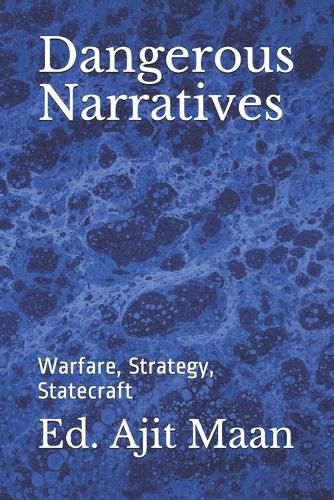Readings Newsletter
Become a Readings Member to make your shopping experience even easier.
Sign in or sign up for free!
You’re not far away from qualifying for FREE standard shipping within Australia
You’ve qualified for FREE standard shipping within Australia
The cart is loading…






Narrative directly impacts the threat environment whether in a physical conflict zone, or in terms of the effects of radicalization, or the interference of foreign governments in domestic politics. Therefore dominating the narrative space should be a priority. That is where non-state actors fight best. That is where foreign governments have proven effective in waging war against us without getting dirty hands. That is precisely where our enemies dominate, and no amount of firepower will create a win in that space. The center of gravity in any conflict is the narrative space. It always has been. But in the past we have mis-identified parts for the whole; just as terrorism is only one aspect of psychological warfare, so too psychological warfare is only one aspect of Narrative Warfare. Narrative Identity Theory is the basis of Narrative Warfare. Psychological, Information, Influence, and Stability Operations, are all aspects of Narrative Warfare. They fall under its domain. The most effective weapons in warfare have always been the ones that target the cognitive space because they are the most enduring. Kautilya in India in the 4th century BC refers to the psychologically based tactics and strategies of those before him, suggesting that the strategies may have been employed as early as 650 BC. Hits in the cognitive space were prescribed by Sun Tzu, practiced by Genghis Khan’s armies, employed by Xerxes, the Persian General 2,500 years ago, by Hannibal more than 200 years before the birth of Christ. Native American tribes understood that their blood-curdling screams terrorized their enemies, thereby reducing their will to fight before the fight began. But hits in the cognitive space do more than produce a win before the bullets fly. It is a mistake to assume that narrative is only a non-kinetic strategy that belongs in the soft power toolbox. Narrative underlies any conflict, even the most kinetically oriented.
$9.00 standard shipping within Australia
FREE standard shipping within Australia for orders over $100.00
Express & International shipping calculated at checkout
Narrative directly impacts the threat environment whether in a physical conflict zone, or in terms of the effects of radicalization, or the interference of foreign governments in domestic politics. Therefore dominating the narrative space should be a priority. That is where non-state actors fight best. That is where foreign governments have proven effective in waging war against us without getting dirty hands. That is precisely where our enemies dominate, and no amount of firepower will create a win in that space. The center of gravity in any conflict is the narrative space. It always has been. But in the past we have mis-identified parts for the whole; just as terrorism is only one aspect of psychological warfare, so too psychological warfare is only one aspect of Narrative Warfare. Narrative Identity Theory is the basis of Narrative Warfare. Psychological, Information, Influence, and Stability Operations, are all aspects of Narrative Warfare. They fall under its domain. The most effective weapons in warfare have always been the ones that target the cognitive space because they are the most enduring. Kautilya in India in the 4th century BC refers to the psychologically based tactics and strategies of those before him, suggesting that the strategies may have been employed as early as 650 BC. Hits in the cognitive space were prescribed by Sun Tzu, practiced by Genghis Khan’s armies, employed by Xerxes, the Persian General 2,500 years ago, by Hannibal more than 200 years before the birth of Christ. Native American tribes understood that their blood-curdling screams terrorized their enemies, thereby reducing their will to fight before the fight began. But hits in the cognitive space do more than produce a win before the bullets fly. It is a mistake to assume that narrative is only a non-kinetic strategy that belongs in the soft power toolbox. Narrative underlies any conflict, even the most kinetically oriented.